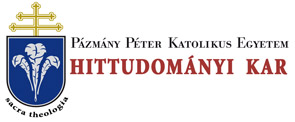Folia Theologica et Canonica 10. 32/24 (2021)
Sacra theologia
THE ROLE OF PATRISTIC AND MEDIEVAL SOURCES... 51 I. Chapters of Canons Regular Parallel to the secular chapters (capitula saecularia), principally under the influence of the regulations of St. Augustine (f430) and St. Chrodegang (+766) bishop of Metz (Regula Canonicorum)'4, the canons regular (canonici regulari)14 15 were organized as a group of independent religious institutions, thereby creating the first medieval centralized (non-monastic) communities from the 11th century.16 These include, for example, the Augustinian Canons of Lateran (Canonici Regulari S. Augustini Lateranensium), or the Norbertine Canons (Canonici Regulari Premonstratensis), founded in 1120, which by the end of the 12th century had spread throughout Europe.17 In fact, it is the birth and the rapid growth of the Dominican (1216) and the Franciscan Order (1223) that will set the limits of this significant period - also known as the Golden Age - and of the development of communities of the Cistercians and the Norbertines.18 II. The Vita mixta as Principle of Canons Regular’ Way of Life The canonical way of life (clericus canonicus: cleric who lives according to the canons) did not originally mean a religious life in solitude, but a particular harmony of monastic and active life (vita mixta), whereby the priests who were organized in community became involved in the administration of parishes, their formation or reorganization, and in the education of the cathedral schools (e.g., Laon19, Schäftlarn20). This is the reason why, besides their own 14 Claussen, M. A., The Reform of the Frankish Church: Chrodegang of Metz and the Regula Canonicorum in the Eighth Century, Cambridge 2004. 15 Giroud, Ch., L’Ordre des Chanoines Réguliers de Saint-Augustin et ses diverses formes de régime interne. Essai de synthese historico-juridique, Martigny 1961. 37-41. “ Creusen, J., Religieux et religieuses d’aprés le droit ecclésiastique, Paris 1940. 21. 17 Rocca, G. (a cura di), Dizionario degli Istituti di Perfezione, Roma 1969-2003. II. 46-63. Szuromi Sz. A., Az egyházi intézményrendszer története, 118-120. Handgrätinger, Th., Szent Norbert érsek és rendalapító (transi. Ullmann, P. A.), Gödöllő 2019. 41-59. 18 In detail cf. Backmund, N., Geschichte des Prämonstratenserordens, Grafenau 1986. 11-18. Southern, R. W., A nyugati társadalom és az egyház a középkorban (transl. Jászay, G.), Budapest 1987. 295-336. About the contemporary situation in Hungary cf. Fügedi, E., Koldulórendek és városfejlődés Magyarországon, in Fügedi, E. (ed.), Kolduló barátok, polgárok, nemesek: Tanulmányok a magyar középkorról, Budapest 1981. 57-88. 19 Constable, G., The Reformation of the Twelfth Century, Cambridge 1996. 116-118; cf. Szuromi, Sz. A., La cultura del diritto canonico nelle cattedrali e nei monasteri déllé Fiandre nel XIV secolo [Videoconference on Canon Law History LXV] (London - Roma: December 4lh 2021). 20 Viejo-Ximénez, J. M., Anotaciones marginales en la Discordantium canonum concordia del monasterio de Schäftlarn (München, Bayerische Staatsbibliothek, lat. 17161), in Folia Theologica et Canonica V (Supplementum) [2016] 245-273. The most recent analysis (dating and localization) cf. description by Szabolcs Anzelm Szuromi (München, June 2nd 2019).
